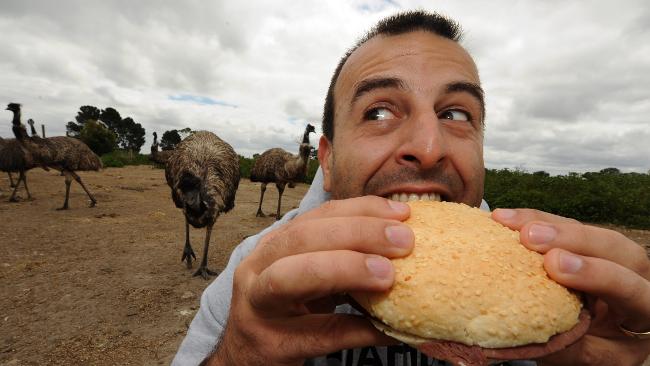Sharks and crocodiles
Shark attacks in Australia are very rare, however may be fatal. Shark netting on Australian beaches deter sharks, but you can further reduce your risk by always swimming between the flags on patrolled beaches and not swimming at dusk or evening. Avoid swimming alone, a long way offshore, at river mouths or along drop-offs to deeper water.
Crocodiles live in rivers and coastal estuaries across northern Australia, often changing habitat via sea. When travelling near crocodile habitats, observe safety signs and don’t swim in rivers, estuaries, tidal rivers, deep pools or mangrove shores. Also seek expert advice about crocodiles before camping, fishing or boating.
Popular Australian destinations
Include the coastal cities of Sydney and Melbourne, as well as other high profile destinations including regional Queensland, the Gold Coast and the Great Barrier Reef, the world's largest reef. Uluru and the Australian outback are other popular locations, as is Tasmanian wilderness. The unique Australian wildlife is also another significant point of interest in the country's tourism.
Sun Protection
In Australia the sun is very strong and deadly, just one prolonged day in the sun without protection, could be fatal or cause long term permanent damage to your body.
These real stats below dont lie.( Google them if you like.)
These real stats below dont lie.( Google them if you like.)
Every year, in Australia skin cancers account for around 80% of all newly diagnosed cancers
between 95 and 99% of skin cancers are caused by exposure to the sun.
Always wear a shirt, hat, sunglasses and
SPF 30+ sunscreen lotion, even on cloudy days. If spending the whole day
outdoors, reapply sunscreen regularly. Stay out of the sun during the middle of
the day when the sun is strongest. Make sure you drink plenty of fluids to avoid
dehydration.
Australia’s beautiful beaches can hold hidden dangers in the form of strong
currents called rips. Avoid them by always swimming between the red and yellow
flags - they mark the safest place to swim on the beach. Lifesavers wearing red
and yellow uniforms generally patrol beaches during the warmer months of October
to April, but some of the most popular beaches are patrolled all-year round.
Never swim alone, at night, under the influence of alcohol or directly after a
meal. Always check water depth before diving in and never run and dive into the
water from the beach.
The poisonous animals – snakes, spiders, marine stingers
Marine stingers are present in tropical waters from November to April. During this time you can only swim within stinger-resistant enclosures, which are set up on the most popular beaches. You will also need to wear protective clothing when swimming, snorkeling or diving on the outer Great Barrier Reef. Always observe warning signs. When bushwalking or hiking, you can avoid snake and spider bites by wearing protective footwear and using your common sense. If bitten, seek immediate medical attention. Deaths from snake bites are extremely rare and there have been few deaths from spider bites since anti venoms were made available in 1981.
Travelling in remote Australia
Driving through Australia’s remote and rugged areas requires thorough preparation. Before embarking on a 4WD or outback journey, ensure you have a roadworthy vehicle fitted with GPS and two spare tyres. You’ll also need good maps, extra food, water and fuel and an emergency plan. Plan your route carefully and notify a third party of your expected arrival. Check road conditions before beginning your journey, stay with your vehicle if it breaks down and avoid travelling in extreme heat conditions. If driving a conventional vehicle through remote areas, drive slowly on unsealed, dusty or narrow roads and always check road conditions before turning off major roads. Mobile phones have limited coverage in remote areas, so check your phone provider for coverage.
Bushwalking or hiking in wilderness
When planning a bushwalk or hike, check the length and difficulty of the walk and consider using a local guide for long or challenging walks. If walking without a guide, tell someone where you’re going and when you expect to return. Wear protective footwear, a hat, sunscreen and insect repellent and take wet weather gear, a topographic map and plenty of water. When walking, read maps and signs, stay on the track, behind safety barriers and away from cliff edges. Don’t feed or play with native animals, as you might get scratched or bitten. Plan walking in summer months carefully and avoid challenging hikes when the sun is too intense.
Visas
All visitors to Australia, apart from New Zealanders, require advance permission to enter the country. For most countries, a full visa is required, but holders of certain passports from some OECD and some East Asian countries are able to apply for the simpler Electronic Travel Authority which enables one to apply and be granted a visa.























